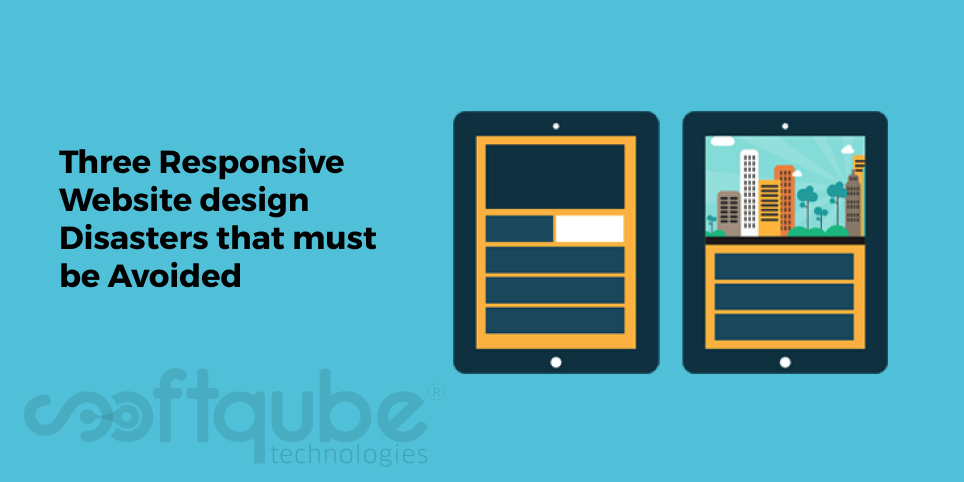Three Responsive Website design Disasters that must be Avoided
May 6, 2015

Responsive Designs are a hot trend in today’s era. The reason being every one using internet on mobile and so every business has to develop a website that is easily visible and properly accessible on devices like mobile and tablet.
Further, Google’s mobile algorithm now also has made it mandatory for websites to have a mobile friendly website. This has increased the demand for responsive websites. With Responsive design, a single website can run on several devices without developing its various versions.
However, developing such designs is not an easy task and as a result many mistakes occur while performing this task. Here, we will discuss three common mistakes that designers generally make while developing responsive websites but before that let’s understand the difference between three layouts.
Types of Layouts:

Difference between scaling, Fluid and Responsive: These three terms are often confused with each other and sometimes one is used instead of other. But in real terms all these three differ from each other.
- Scaling layouts are created to be adjusted to every single element that is relative to other element. These are responsive in such a way that they can get adjusted to the content as per the screen size.
Here, Layout remains static but the size of every element changes in order to provide a constant appearance.
- Fluid Layouts vary from scaling layouts and here the difference is they scale container elements relative to the size of the screen size. This can be obtained by making use of various units in order to solve the issue of shrivelling text.
In a Fluid layout, designs give up consistency to make it easy for readers to read the content.
- Responsive Layouts never scale anything. They just alter the display based on the screen size.
Now, we are aware about three types of layouts and hence we can jot down the difference easily. Hence, let’s now get to the point and know about mistakes that often occur while developing responsive websites.
Three Common Responsive Web Design Mistakes:
- Roll up menus: Suppose you use a navigation bar at the top of your page then responsive design will reduce it to a compact format when it is displayed on the small screen. However, in case the display area is wider than the break point but very small to display the menus times in one line then the menu gets rolled up.
An example is as follows:
This issue can be solved in many ways. One of them is to decrease the number of items which are displayed horizontally on the navigation bar. These can be divided into categories and sub categories so that these can be displayed easily on smaller screens.
Another way is to change the break point to a lesser value. The real value must be the width at which your navigation bar actually starts to fail and last but not the least is to use different menu style for different devices.
- Making use of fixed width images: Areas of the website that include content are set to display as per the screen size. Hence, when the fixed width image is large than the screen size, the image gets cropped automatically.
Hence, avoid using images with fixed width. This problem can be solved by using certain units to set the width of the image or making use of the framework that supports it like as Bootstrap.
Further, a responsive image class can also be used (i.e. class= “img-responsive”).
- Misrepresentation of Elements: Let’s assume that you have a website that is not mobile friendly. Now, what will happen is when it is viewed on mobile device; the columns will work as rows. This badly affects the user experience.
The reason being elements like rows and columns remain unhandled and this is caused due to misrepresentation of the content that actually destroys the design of the website on any device such as mobile or tablet.
This problem can be solved by simply setting the height and width as well as padding of the element. In case the elements move out of their position then these can be adjusted by adding div tags and adjusting the margins.
Wind Up
The mistakes discussed here occur very often when it comes to developing responsive web design. There are several others that can actually worsen a good design. Modern web browsers have inbuilt responsive layout testing and hence it’s necessary to properly plan your web design and keep testing it.
To get effective responsive web design services, get in touch with Softqube Technologies; well known web design company India.
Share on







